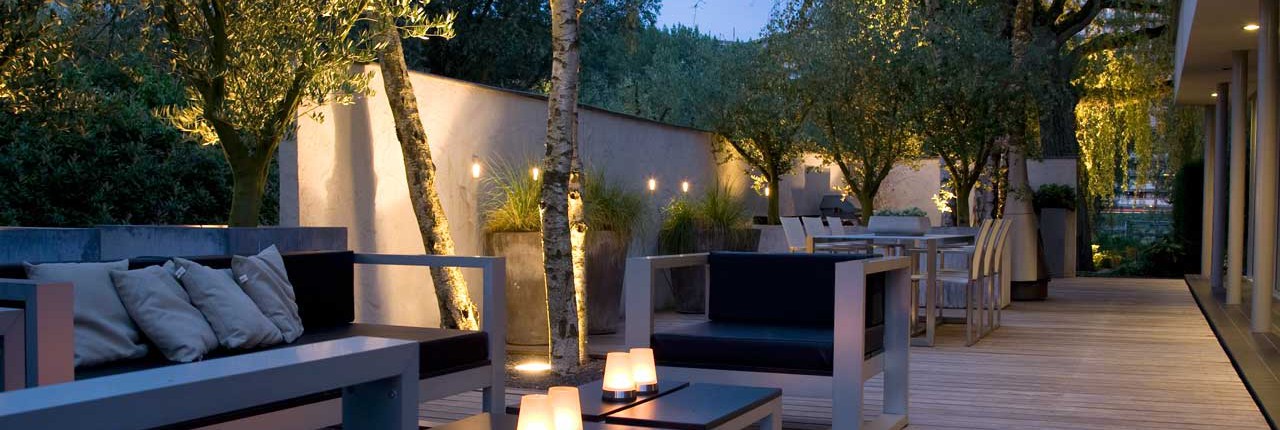Light has a considerable influence on how a space is experienced. And light does not exist without darkness. To reach the desired effect, it is important to pay attention to dark spaces in the garden, so that the bright spaces can be experienced.
Besides the actual design of the garden, other factors that are not in our control also have a great effect. The way the light works, both in strength and in time, is different in the winter months than in summer, for example. The garden is also experienced differently from inside the house than from within the garden itself. This is important information to take into account when designing a garden, especially in areas with long dark periods.
Besides emphasising natural sunlight, Martin Veltkamp creates even more atmosphere in the garden by amplifying contrasts in garden lighting through the creation of dark spaces. He also takes the mirroring effect of the windows at night into account. Positioning lighting points in the back of the garden, which allows the user to experience the depth of the garden, can prevent this.
Garden lighting can strongly affect the atmosphere and it is important to find the right balance and, especially, to prevent the lighting from feeling overly artificial. This is why Martin Veltkamp uses contour lighting by lighting objects from behind. He often does this in combination with spotlights, which light the subject directly. Lighting a tree or shrub from below with up-lights creates special effects, for example. A facade is highlighted with floodlights. Martin Veltkamp also knows that garden lighting is not just about creating atmosphere. Implementing functional lighting may also be necessary, for example for the security of stairs or an entry. These aspects will be explicitly taken into account in the lighting plan to prevent any negative effect that the security lighting may have on the desired atmosphere.

